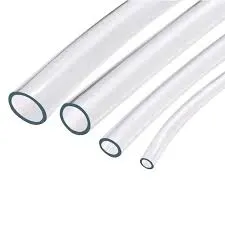Th11 . 03, 2024 12:09 Back to list
hdpe pipe jointing
Understanding HDPE Pipe Jointing A Guide to Efficient and Durable Solutions
High-Density Polyethylene (HDPE) pipes are increasingly becoming the preferred choice for various applications, including water supply, gas distribution, and sewage systems. One of the critical aspects of utilizing HDPE pipes effectively is the jointing process, which plays a significant role in ensuring the longevity and reliability of the pipeline system.
HDPE pipes are known for their excellent strength-to-density ratio and corrosion resistance, making them suitable for both underground and above-ground applications. However, the performance of HDPE pipe systems largely depends on how well the joints are made. Proper jointing not only prevents leaks but also enhances the overall efficiency of the transport system.
Understanding HDPE Pipe Jointing A Guide to Efficient and Durable Solutions
Butt Fusion Welding is one of the most widely used techniques for HDPE pipe jointing. In this method, the ends of the pipes are heated until they reach a molten state and then pressed together to form a seamless joint as the materials cool and solidify. This method creates a strong, durable bond that typically has a similar strength to the pipe itself. Butt fusion is especially effective for larger diameter pipes and is often used in municipal water and gas distribution systems.
hdpe pipe jointing

Electrofusion involves the use of a special fitting that incorporates heating elements. When electric current is passed through these elements, they generate heat, melting the pipe and fitting materials to create a secure joint. This method is particularly advantageous for smaller diameter pipes and is highly effective in tight or hard-to-reach spaces. Electrofusion joints are renowned for their reliability and are commonly employed in complex installations.
Mechanical fittings are another option for connecting HDPE pipes. This method involves the use of standardized fittings that mechanically clamp the pipes together. While this approach is less common than fusion methods, it can be useful where it is impractical to use fusion techniques or where the pipes need to be disassembled. Mechanical fittings offer flexibility and are easy to install, making them a practical choice in many scenarios.
When considering HDPE pipe jointing, it is essential to also look into the quality and standards of the materials utilized. Adhering to industry standards, such as those set by ASTM or ISO, ensures that the joints can withstand the pressures and environmental conditions they will face.
In conclusion, the jointing of HDPE pipes is a vital component of pipeline installation that determines the longevity and functionality of the system. By understanding the various jointing methods and choosing the right one for the application, operators can ensure efficient and durable connections that contribute to the overall success of their projects.
-
Durable PP Rigid Sheet: Lightweight, Chemical Resistant Solutions
NewsAug.21,2025
-
PVC Grey Sheet for Extraction: Chemical Resistant & Durable
NewsAug.19,2025
-
Durable PVC Pipe Fittings for Plumbing & Irrigation Needs
NewsAug.18,2025
-
HDPE Steel Belt Reinforced Spiral Corrugated Pipe | High Strength
NewsAug.17,2025
-
HDPE Pipe Fittings: Durable, Leak-Proof Solutions
NewsAug.16,2025
-
Premium CPVC Sheet: High-Temp & Chemical Resistant Solutions
NewsAug.15,2025

